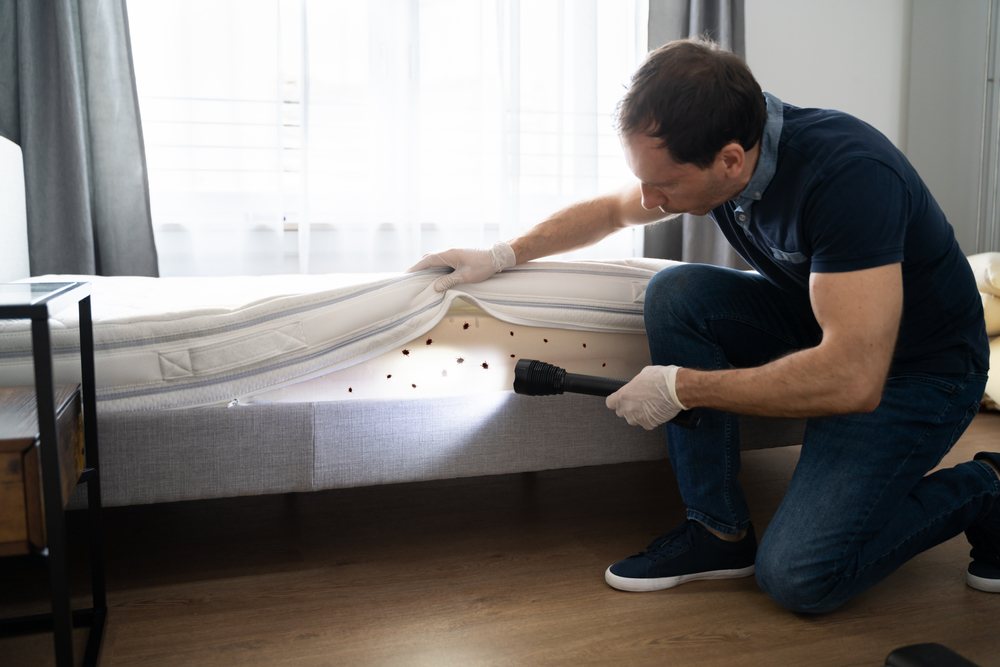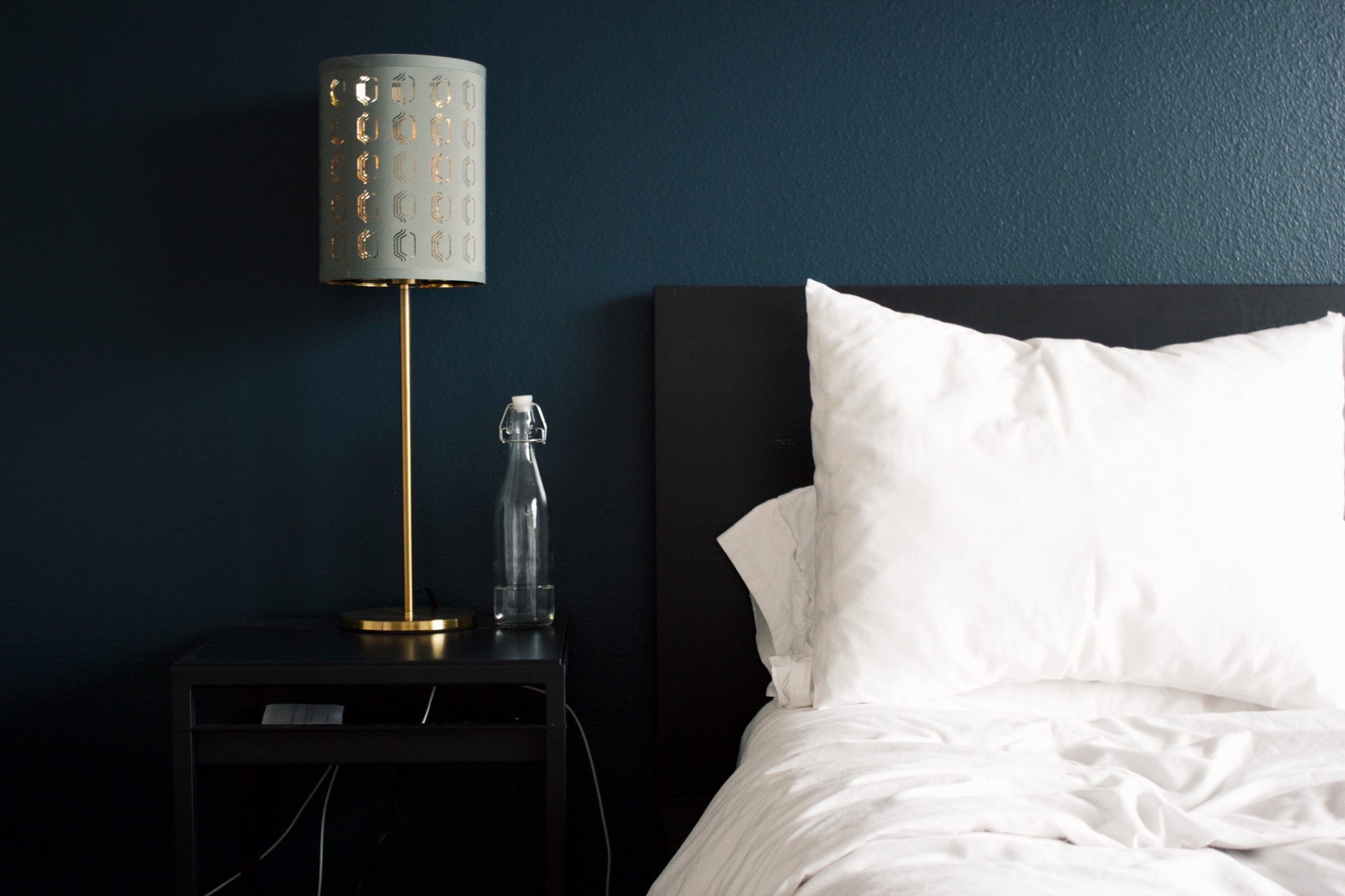Bed bug infestations can be a real nightmare.
These resilient pests spread easily, cause unsightly symptoms, and are hard to kill.
Whether it be in your home, apartment, or hotel room, an infestation can cause major disruption to your daily life.
So how do you remove an infestation?
Getting rid of bed bugs permanently is a 3-step process.
- Identification
- Extermination
- Prevention
In this article, we discuss how to approach this first step.
And to identify a bed bug properly, it’s natural to wonder…
Can you actually see bed bugs?
Let’s dive into this exact question.
Can You See Bed Bugs?
While bed bugs are visible to the naked eye, they can be relatively difficult to see. For many people, it comes down to knowing (or not knowing) what to look for.
Bed bugs are typically the size of an apple seed at about 5 to 7 mm in length.
They can resemble similar household bugs such as carpet beetles and cockroaches, so it’s important to be able to distinguish bed bugs appropriately.
Whether it be by their musty odor or reddish-brown elongated bodies…
Adult bed bugs may be visible to those who are observant, however young bed bugs are much harder to see.

Baby bed bugs tend to be translucent and white-yellowish in color, so they blend in with their surroundings easily…
(you may need a magnifying glass to see them at all).
Page Contents:
Can You See Bed Bugs in UV Light?
One of the most difficult tasks imaginable is finding bed bugs at night. Fortunately, UV light can make it easier to locate bed bugs in your bedroom. This is due to the fact that insect shells contain large amounts of phosphors, which absorb ultraviolet light and also give off some variation of visible light.
When a UV light is brought in, any bed bugs attempting to hide in the shadows will glow with iridescence.
UV Light is very similar to regular light, in that both give off radiation. The only difference is where the light lives within the light spectrum.
To detect bed bug with UV light you should follow these steps:
1. Remove clutter: Clean up any mess around the infested area. This includes anything that bed bugs can use as a hiding place such as dirty clothes, books, electronics etc.

2. Seal off potential means of exit/entry: Seal off the area under doors or any cracks in the walls/baseboards. You don’t want any bed bugs scurrying out of sight when you turn on the UV light device.
3. Center your bed in the room: Move your bed away from the wall so that bed bugs can’t easily hide.
It’s even possible to kill bed bugs by utilizing UV light, although the margin for error is high and it’s not very effective.
(So we wouldn’t recommend it).
Can You See Bed Bugs on Your Skin?
Since bed bugs are minuscule in size, they can be difficult to spot on the human body unless you’re observant by nature. While it might be assumed that the presence of bed bugs can be felt crawling on your skin, the fact that they weigh next to nothing means that bed bugs can go unnoticed for minutes or hours at a time.
Also if you’re awake and moving around…
It’s unlikely bed bugs will be hiding around your body.
These pests prefer stable conditions while they’re feeding, and usually just come out at night while their hosts are asleep.
Unless they’re feeding, bed bugs are almost constantly hiding in dark/damp areas around the bedroom.
This is one of the reasons why you need to be thorough when choosing and implementing a bed bug treatment. Many treatment methods don’t persist to the hiding places where bed bugs reside.
(often leaving a few survivors behind).
Which is exactly why bed bug reoccurrence is so common. Because even one bed bug left behind can mean another full-scale infestation in a matter of months.
If you do suspect something crawling on you…
You should perform a thorough examination of exposed areas of skin regularly.
Can You See Bed Bugs on Your Bed?
One of the trickiest things about spotting bed bugs is that they can easily hide in a number of different places throughout the house. People assume that because they’re called “bed bugs” they are most likely to be found in mattresses and bedding, however this is not always the case.
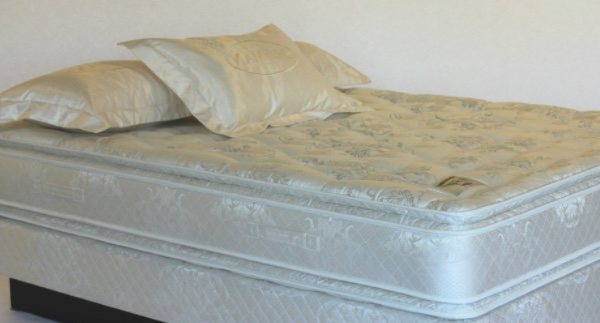
Bed bugs do like to hide along mattresses and box springs, but they tend to be found near seams and tags as opposed to embedding themselves within the material.
They also like to hide in wood.
Meaning cracks/holes in the bed frame or headboard of a bed set are places they’re often found.
Whether or not bed bugs can actually be visibly seen on the surface of a bed depends on how bad an infestation is.
Because bed bugs are extremely small, it can be difficult to spot just one or a few of them on a large surface—especially if the material is dark in color.
An infestation that has gained traction will be much easier to spot, though this type of warning sign unfortunately means things have progressed to the point of extreme severity.
If you suspect an infestation but don’t see live bugs around your bed. You can look for these signs and symptoms:
- Dark brown dots along the mattress, sheets or bedding (indicating a trail of bed bug excrement).
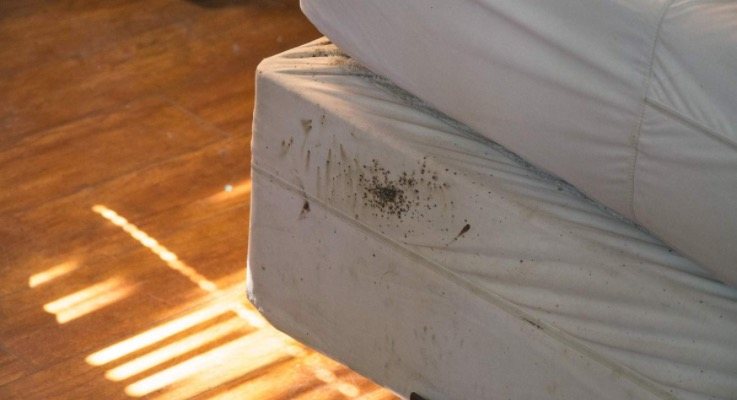
- Small red drops of blood along the sheets or pillows.
- Bed bug shed skin or exoskeleton.
- An unpleasant musty scent (sort of a mix between a locker room and coriander).
For more detail on all of the common bed bugs signs, check out our complete guide.
Can You Have Bed Bugs and Never See Them?
Yes. Bed bugs are notoriously good at hiding and given the fact that they are exceptionally small in size, spotting bed bugs is easier said than done. This is not to say that they aren’t present in a home or aren’t capable of doing damage, however. Just because you can’t see bed bugs does not mean your living space is insect-free.
As mentioned above, these creatures hide during the day. If you suspect an infestation you can look in the following areas to check for bed bugs.
1. Around your bed: Though this seems obvious you need to be thorough when checking. Peel away all bedding, flip the mattress and box spring, check around the headboard, and under/behind the bed frame.
2. Within furniture: Check within the drawers of your dresser or nightstand and look under any furniture that seems like a good hiding spot for bed bugs.
3. Along walls & baseboards: Bed bugs like to hide in cracks/crevices within the walls so you should run your hand along ALL walls to feel for bed bugs accordingly.

Other (less common) areas bed bugs could be hiding are around kitchen appliances, behind wall hangings, within curtains, or along carpets.
Click here for more information about how to check for bed bugs.
Bed Bug Size and Appearance
As bed bugs are quite often confused with other more innocuous insects, it’s important to be able to tell them apart from pests that may not pose any significant threat to the home.
A typical adult bed bug will be reddish-brown in color, with a long, oval body resembling the shape of a pumpkin seed. Depending upon whether they have fed recently, they may either be flat or balloon shaped.
Contrary to popular belief, bed bugs cannot be identified simply from the type of bite they deliver, as bites from bed bugs can resemble similar insects such as fleas, chiggers, and other bugs.
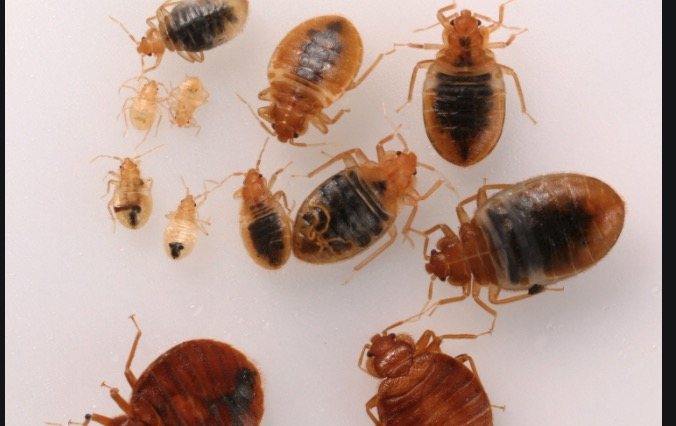
Here is a quick breakdown.
Adult bed bugs: Brown, flat, and about ¼ inch in size
Nymphs (baby bed bugs): White/cream color, flat, about a third of the size of adult bed bugs.
Bed bug eggs: extremely small and almost translucent. They’re round and can stick to the surface they’re laid on.
Click here for our complete guide on the bed bug life cycle.
Early-Stage Bed Bug Signs
Aside from the more common signs of a bed bug infestation, there are a number of early warning signs that point to a bed bug problem.
One sign to look for is…
New or unexplained insect bites on your body, which could signify that you have some type of infestation in your residence.
Bed bugs don’t have to ruin your home life, but they’re very capable of doing so if left to fester.
By taking precautions and making sure the right steps are followed, however, you can mitigate bed bugs effectively or work to ensure they never become a problem in the first place.
You May Be Eligible for a Payout
If you suffered from bed bugs in your hotel or apartment you can give us a call at (855) 733 9217 for your quick and easy consultation.
(Available 24 hours a day 7 days a week).
If you choose to inquire about a claim, consultations are 100% FREE.
We understand the sensitivity of the situation, and the potential embarrassment that falling victim to an infestation can cause.

When working with an experienced bed bug bite attorney…
You can not only receive compensation for your injuries, but you can also help prevent future infestations by discouraging future negligent practices.
Get in touch today!
